Now that you’re awake after my last post (!), let’s take a deeper dive into Leonard Bernstein’s theory of American musical identity.
Why Bernstein? I’m not picking on him specifically. Joseph Horowitz has called his story in the Young People’s Concert from 1958 (which he based on his senior thesis at Harvard) “the standard narrative.” The story’s pervasiveness is why it’s a valuable starting point for understanding why American musical identity is such a complex and touchy issue.

Musical Eugenics?
The stinger in my last post was explosive! Let’s begin near the end.
In the 1920s, actual American eugenicists, such as John Powell, used the language of “science,” including genetics, to describe music’s stylistic evolution. They also articulated plans for a “pure” musical future. They were terrible humans.
To be clear: Bernstein’s ideas about American musical identity differed significantly from Powell’s. He did not invoke the classic eugenicist idea of “purity,” for example. As Dr. Katherine Baber has explained in her recent book Leonard Bernstein and the Language of Jazz, his conception of American-ness also arose out of an early twentieth-century Jewish intellectual heritage. (Thanks to Dr. Naomi Graber for this lead.)
But his musical theories developed in a milieu in which ethnic/racial conceptions of national identity were the norm and could easily be extended to national musical identity. He was left with few alternatives for describing national stylistic evolution that didn’t rely on the “scientific/genetic” approach taken by musicians across a wide ideological spectrum, including Powell.
In the 1938 letter to Aaron Copland cited in my previous post, Bernstein wrote:

From here, we can conclude that Bernstein believed the following:
Distinctively American classical music was a real possibility and perhaps already existed.
He had the ability to detect it by listening to it.
He could analyze it to discern precisely what musical elements (“terms”) constituted its American-ness.
He could back-trace those elements by looking at older music in order to find their racial and/or national “musical-genetic origins” (my phrase).
The rest of this series will explain why this approach, as I stated in my previous essay, “conspicuously papered over the country’s racist past.”
Now we need to begin at the beginning!
A Toxic Combination
Throughout the nineteenth century, theories of national identity in the United States tended to blend three prevailing Western models in different proportions:
A “civic conception” based on common legal rights and duties;
A “cultural conception” based on shared culture;
An “ethnic conception” tied to blood ancestry.
Although it was always present (see the Naturalization Act of 1790, for example), the ethnic conception came to prominence in the second half of the century.
Scholars typically attribute the Western European concept of national identity largely to eighteenth-century German philosopher Johann Gottfried von Herder. Herder believed that certain shared cultural practices, especially language, tied people together into a national unit—a “cultural nation.”
It’s important to note, though, that Herder didn’t believe that nations were synonymous with “races,” or ethnic groupings. He also didn’t believe in national hierarchies. He was what we now call a “cultural relativist.”
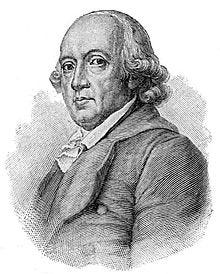
Another eighteenth-century German philosopher, Johann Gottlieb Fichte, expanded on Herder’s cultural conception of national identity and proposed that ancestral lineage (or “ethnicity”) enabled a “cultural nation” to persist over time. Of course, one could argue that teaching children the nation’s cultural practices would be enough. But that’s not what Fichte thought.
The next logical step in his line of thinking is that national autonomy is a function of ethnic and cultural homogeneity. Otherwise how would the nation stick together?
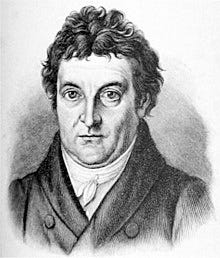
Nineteenth-century German historians hotly debated how that homogeneity took shape among Germans, who over the previous several centuries had experienced various types of ethnic and cultural assimilation. (Disagreements about the extent of assimilation also shaped different approaches to German national unification.)
In a country like the United States, where many ethnic and linguistic groups occupied the same geographical spaces, national homogeneity was a non-starter.
Meanwhile, other European thinkers, such as Arthur de Gobineau, author of An Essay on the Inequality of Human Races, developed a collection of ideas known as “scientific racism.” For Gobineau, though, the term “race” meant more than just a collection of physical characteristics. It also encompassed “history, politics, and the social body.”
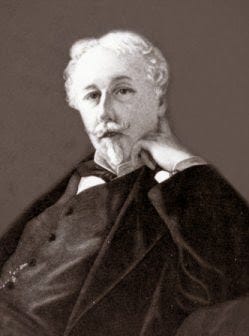
In the United States, scientific racists like Samuel George Morton did use physical traits like skull shape to assess the relative intellectual abilities of the various races.

Another key figure in this movement was Louis Agassiz, who promoted the idea that the first humans were distributed around the globe with unequal genetic attributes. Agassiz served on the Harvard University faculty from 1847 until his death in 1873, which enabled scientific racism to become institutionalized loosely across the country’s robust higher education system.
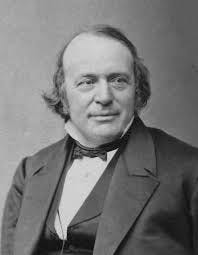
Around the same time, other thinkers, most notably Sir Francis Galton, Charles Darwin’s cousin, began to argue that human behavioral traits could be passed genetically from one generation to the next. He coined the term “eugenics” in 1883 to describe centralized planning of desirable genetic traits—physical and behavioral.
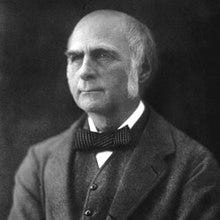
Harvard became one of the country’s central hubs of eugenics research.
The toxic combination of ethnic conceptions of national identity, scientific racism, and eugenics would become catastrophic during the Nazi era. But, as historians Dr. Nell Irvin Painter and Dr. Ibram X. Kendi have argued, it’s important to realize that these ideas began to coalesce and spread in the United States decades earlier.
I’ll return to this coalescence and its relationship to music in later posts.
Antebellum Classical Music in the United States
There is almost no American music of the early or middle nineteenth century that is interesting, or ever heard today. […] In other words, America never had a classical music. — Bernstein, Senior Thesis (1939)
Actually, our real serious music didn’t even begin until about seventy-five years ago. — Bernstein, “What is American Music?” (1958)
Bernstein’s theory of American music hinged on the idea that there was very little classical music in the United States before the Civil War. But he was mistaken, and his (understandable) lack of knowledge directly affected his theories.
Excluding chamber music, songs, and other smaller genres, American composers—which I define here as composers born or living in the United States—wrote significant symphonies and operas that reflected prevailing civic and cultural conceptions of American national identity at the time.
None of their music relied on an ethnic conception.
It would be foolish, though, not to acknowledge that these individuals, like most “white Americans” at the time, probably held latent ethnic conceptions of the nation that excluded Native Americans, people of African/Asian descent, and other groups.
I. Anthony Philip Heinrich (1781–1861)
Born in Bohemia in a town now situated in the Czech Republic, Heinrich immigrated to the United States in the 1810s. A passable violinist and conductor, he taught himself how to compose after moving to the Bardstown, Kentucky area. He styled himself the “Log Cabin Composer.”
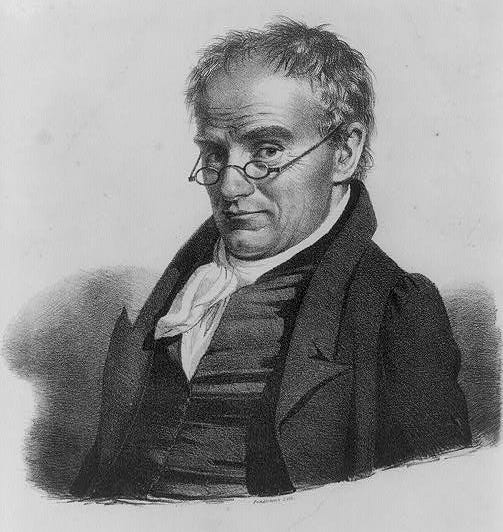
Between roughly 1830 and 1861, Heinrich wrote dozens of large works inspired by American national topics, from Native Americans to political history to nature. Here are some examples:
Pushmataha, a Venerable Chief of a Western Tribe of Indians, 1831
The Pilgrims of Plymouth, 1858–59
The Columbiad, or Migration of American Wild Passenger Pigeons, 1837
Without knowing anything about the scores, we can already tell that Heinrich intended to convey national identity through the titles alone. As I explained in my essay “What’s That Sound,” this approach maps onto Marina Frolova-Walker’s strategy #1 (“national by intention”) and strategy #4 (“national by association”), neither of which is dependent on the notes themselves.
Even so, an Austrian musician who listened to one of Heinrich’s bird symphonies, The Ornithological Combat of Kings, actually heard these nature-based national associations in the music after attending a performance in the late 1830s:
[Heinrich] sought out Nature in her workshop where she produces her mighty works, where great bridges of rock are thrown across streams; where rivers, broad as seas, flow out of undiscovered sources over hundreds of miles to the ocean itself; where great lakes plunge with deafening roar to the depths below, and the tornado, with its crashing strength lays bare the impenetrable secrets of the primeval forests.
This commentary demonstrates the power of suggestion when composers frame the listening experience with certain narratives. So we can add strategy #2 (“national by reception”) to this situation as well. A sense of national identity didn’t require close analysis of the score, only listening informed by a narrative.
II. George Frederick Bristow (1825–1898)
Bristow was born into a musical family in New York City and began playing violin in theater orchestras at the age of 13. He joined the New York Philharmonic first violin section in 1843, the year after its founding. (His father was a founding member.)
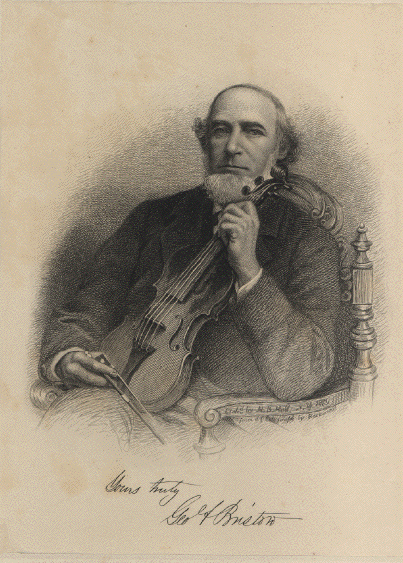
He also developed compositional skills and wrote an overture that the Philharmonic premiered in 1847. By 1853, he had written two full symphonies.
These three pieces are in the lingua franca of orchestral writing. The symphonies exhibit the standard four-movement pattern, sonata form, and motivic development. Bristow made no attempt to “Americanize” his music on a broad stylistic level.
Listeners were unlikely to hear anything “American” in the music, either. One critic described Bristow’s first symphony as “a musical chessboard, with a field for each composer from the time of Haydn to Mendelssohn-Bartholdy.”
Bernstein would have argued that Bristow was “imitating” German models, which would preclude his music from being “American.” But what if Bristow defined American-ness as an extension of European culture, rather than a rupture? (A common belief at the time.) In that case, what about his nationality should stop him from participating in an international musical tradition?
If we return to Frolova-Walker’s matrix of national identity strategies, this one falls under strategy #5 (“national by blood or culture”). Because Bristow believed he was culturally American, whatever he chose to write would also be American.
III. William Henry Fry (1813–1864)
Philadelphia-born William Henry Fry was a radical American exceptionalist, in contrast to Bristow, who felt at home with the idea that the United States (well, the white United States) was a cultural extension of Europe. He approached this problem on two fronts: operatic and symphonic.
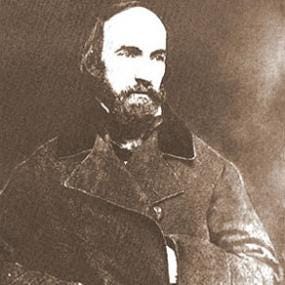
On the operatic front, Fry believed that writing an English-language opera with accompanied recitative was distinctly American. This might cause you to raise an eyebrow, because isn’t this exactly the grand Italian opera style of Bellini? How can copying Italian opera be American?
This approach had never been done successfully…in English—to do it, he thought, would be a mark of distinction for the United States.
He believed grand opera was the highest form of music-making regardless of its national origins.
He understood the reality that composers are always stuck using musical traits with “external” origins. It’s hard to make up a musical language out of thin air.
He compared the situation to American novels: Just because the English language didn’t originate in the United States doesn’t mean someone can’t write an American novel. Similarly, just because grand opera didn’t originate in the United States doesn’t mean someone can’t write an American grand opera. Very practical.
Fry took a more radical approach to symphonic writing. Arguing that only the instruments of the orchestra were “borrowed” from Europe, Fry wrote symphonies that collapsed the standard four-movement structure into a single movement, contained lengthy dramatic narratives expressed in a written program, and used advanced orchestration techniques to deliver the narrative in sound.
In both cases, Fry adopted Frolova-Walker’s strategy #1 (“national by composer intention”) and strategy #3 (“national by interpretation [of the score]”—his own).
Interestingly, his intention for the pieces also included eliciting strategy #2, “national by reception.” He wanted to write music that was easily comprehensible to untrained audiences and argued that this was necessary for writing “democratic” music—a distinctly American trait, from his perspective. In other words, he wanted to capture the political and social essence of the nation in his music.
(For the program of this gem, you’ll have to pick up Orchestrating the Nation!)
To Sum Up
With Heinrich, Bristow, and Fry, we can see three distinct approaches to national identity in the antebellum period that differ from Bernstein’s:
National identity could be tacked onto music meant to depict or convey national topics, regardless of musical style.
An “American” (however defined) who wrote music would be writing “American” music, regardless of the style.
A composer could attempt to capture a national political/social essence with specific musical choices.
This third approach comes closest to Bernstein’s because it is entirely dependent on stylistic choices. The main difference is that the music’s “inner national essence” is not dependent on folk music of any kind, as Bernstein would later argue.
Moreover, these composers did not think drawing heavily from European classical sources was “imitative,” but part and parcel of developing the art form in new directions. Isn’t Beethoven imitative of Haydn, after all?
So why did Bernstein ignore this music?
(A) The scores weren’t readily available. Heinrich’s were sitting in the Library of Congress. Fry’s were sitting in the Library Company of Philadelphia. Bristow’s were sitting in the New York Public Library.
But our Harvard student can’t get off the hook that easily!
(B) Books he might have found in the Harvard library, such as Frédéric Louis Ritter’s Music in America (1884) or W.S.B. Mathews’s A Hundred Years of Music in America (1889), treat Bristow and Fry at some length, but primarily in a negative light (and without the benefit of analyzing their music).
(C) An author he did cite, Rupert Hughes, made the following claim in his book Contemporary American Composers (1900):
…with the exception of a few names like Lowell Mason, Louis Moreau Gottschalk, Stephen A. Emery (a graceful writer as well a a theorist), and George F. Bristow, practically every American composer of even the faintest importance is now living.
The influences that finally made American music are chiefly German. […] The growth of a national school has been necessarily slow, therefore, for its necessary and complete submission to German influence.
Confirmation bias?
Postscript: Other Writers to Follow
Two of my favorite classical music writers, Steve Smith and Olivia Giovetti, have started Substack newsletters of their own. Click on their names to subscribe!
Music City Spotlight: Check out this great new album from Wu Fei and Abigail Washburn on Smithsonian Folkways!
In the queue: The second half of the nineteenth century
Content fueled by Badbeard’s Microroastery (Portland, OR).
If you like what you read here:



